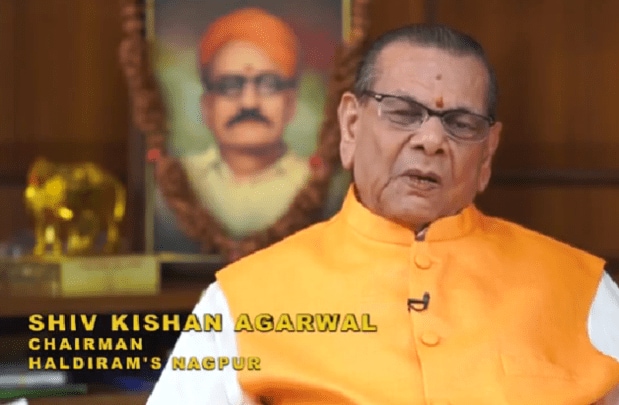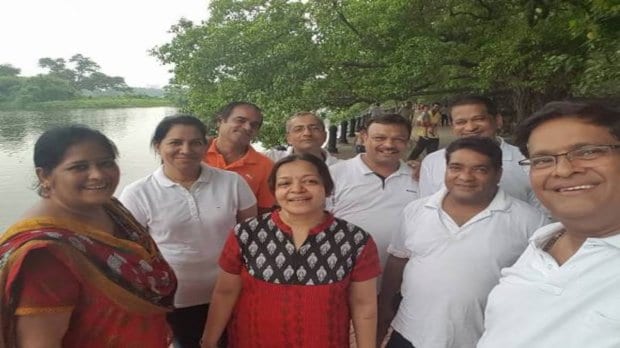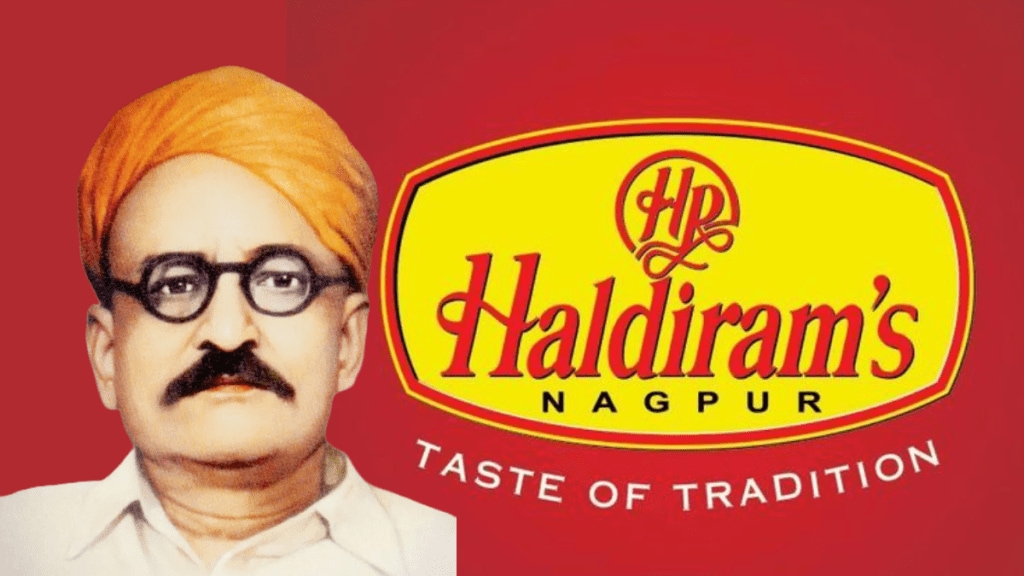In the vast and competitive landscape of the Indian food industry, there is one name that has stood the test of time and risen to unparalleled success – Haldiram. What started as a small sweet shop in Bikaner, Rajasthan, has blossomed into a multi-crore company, redefining the way people perceive traditional Indian snacks and sweets.
With a vision to offer high-quality traditional Indian snacks and sweets, Haldiram’s embarked on a journey that would eventually lead to its status as one of the most renowned food brands in India. The brand gained popularity for its delectable range of namkeens, including bhujia, sev, and a variety of traditional sweets. The consistent quality and flavours of Haldiram’s products soon earned the trust and loyalty of customers across India.
The Agarwal family, known for their business in the food industry, particularly in the realm of snacks and sweets, has a long and intriguing history. With six generations of entrepreneurial success, they have amassed a considerable fortune through their nose for spices and an uncanny ability to navigate bitter legal battles and outperform multinational corporations. Their business, with just haldiram’s valued at a staggering Rs 7,000 crore, has become a household name in India, with a wide range of products sold under various brand names such as Haldiram’s, Haldiram’s Prabhuji, Bikanervala, Bhikharam Chandamal, Bikaji, and Bikano.
However, amidst their remarkable success lies a tale of intra-family feuds and bitter court battles. The most prominent dispute revolves around the coveted brand name Haldiram’s. Various members of the Agarwal family are embroiled in legal conflicts, each vying for the right to claim the brand’s name and associated legacy. These intense legal battles highlight the complexity and competitiveness within the family, where the stakes are high, and control over the Haldiram’s brand represents not only financial value but also pride and recognition.

This is the story of how the Agrawals established an empire, one of India’s leading snacks sweets, snacks and restaurant chains brand. This is the story of Haldiram’s…..
The Haldiram’s story
Once upon a time in the quaint city of Bikaner, Rajasthan, a young boy named Ganga Bishan Agarwal, affectionately known as Haldiram, found himself immersed in his father’s Bhujia business. Bikaner was no stranger to Bhujia—a savory snack crafted from chickpea flour or besan. But Haldiram, even at a tender age, possessed a spark of creativity that set him apart. He envisioned a unique twist to the traditional Bhujia—a thinner version made from moth flour instead of besan.
In 1919, Haldiram’s experiment within his father’s humble shop proved to be an instant hit. The distinctive flavor and texture of his moth flour Bhujia resonated with the people of Bikaner, laying the foundation for two entities that would one day amass a combined revenue of around Rs 9,000 crore.
As Haldiram grew older, he had three sons—Moolchand, Satyanarayan, and Rameshwarlal. The four sons of Moolchand, along with their sister Saraswati Devi, became the torchbearers of the family legacy, taking the various snack companies to unprecedented heights.
Kolkata: 1950s
In the 1950s, Haldiram, accompanied by his sons Satyanarayan and Rameshwarlal, embarked on a journey that would lead them to the bustling city of Kolkata. There, they established the iconic brand “Haldiram Bhujiawala.” Joining them on this venture was Haldiram’s eldest grandson, Shiv Kishan. While the younger sons managed the original Bikaner shop, the business in Kolkata experienced exponential growth, expanding beyond the realm of traditional Bhujia.
The rapid growth
Throughout the 1960s and 1990s, Haldiram’s empire witnessed rapid growth and transformation. Ganga Bishan eventually returned to Bikaner, passing on the reins to his sons, Rameshwarlal and Satyanarayan. However, Satyanarayan decided to embark on his own entrepreneurial journey, establishing “Haldiram & Sons.” Unfortunately, he couldn’t replicate the triumphs of his father. Meanwhile, Rameshwarlal chose to sever ties with his brother Moolchand, leading to the separation of the Kolkata and Bikaner businesses.
In the 1980s, Shiv Kishan Agarwal, accompanied by his sister Saraswati, set their sights on Maharashtra, particularly Nagpur, where they achieved remarkable success. Simultaneously, Moolchand’s youngest sons, Manoharlal and Madhusudan, ventured into the heart of India’s capital, New Delhi, in 1984. Their move propelled the brand to national and international recognition. In Bikaner, Shiv Ratan, Moolchand’s son, took charge and shaped it into Bikaji, which recently went public.

Prabhu and his brother, who managed the Kolkata entity, were prohibited from using the names “Haldiram’s” or “Haldiram” in Delhi. The Haldiram businesses now operate as independent entities, each with its own unique identity. The Delhi unit, led by Manoharlal and Madhusudan Agarwal, emerged as the revenue leader, generating close to Rs 5,000 crore. Nagpur, under the guidance of Shiv Kishan Agarwal, followed closely with Rs 4,000 crore, while Bikaner, helmed by Shiv Ratan Agarwal, amassed around Rs 1,600 crore.
With the recent IPO of Bikaji, the three brothers are gearing up to merge their businesses and embark on their own initial public offering within the next year and a half. However, Pankaj Agarwal, Manoharlal’s son and an integral part of the Delhi business, expressed concerns about the complexities arising from the division of the brands and the internal structure.
The proprietor of the well-known Haldiram Bhujiawala company in Kolkata, Prabhu Shankar Agarwal, who is 56 years old, has developed quite a name in business circles both locally and globally.
On June 5, 2005, Prabhu was detained on suspicion of trying to kill the proprietor of a tea business so that he would give him access to the land in front of the food mart he was constructing.
Today, the Agarwal family’s legacy stands tall, leaving an indelible mark on the Indian food industry. Their brand names have become household names, and their products continue to delight millions across the country. As they navigate their way through legal battles and strive for business excellence, the Agarwals remain an emblem of the tenacity and ingenuity often associated with successful business families in India.








